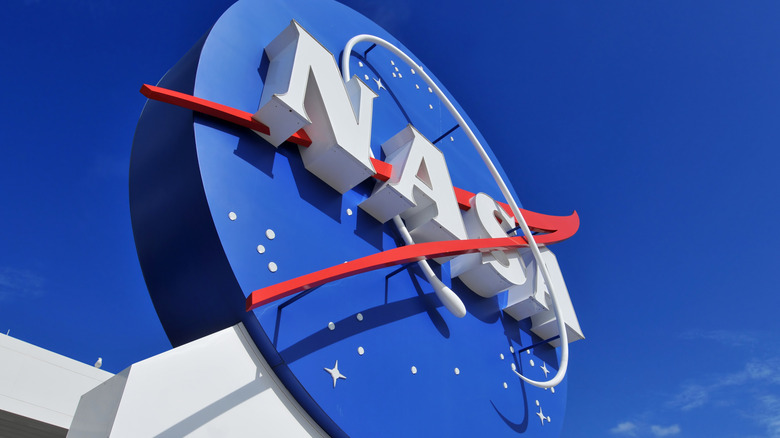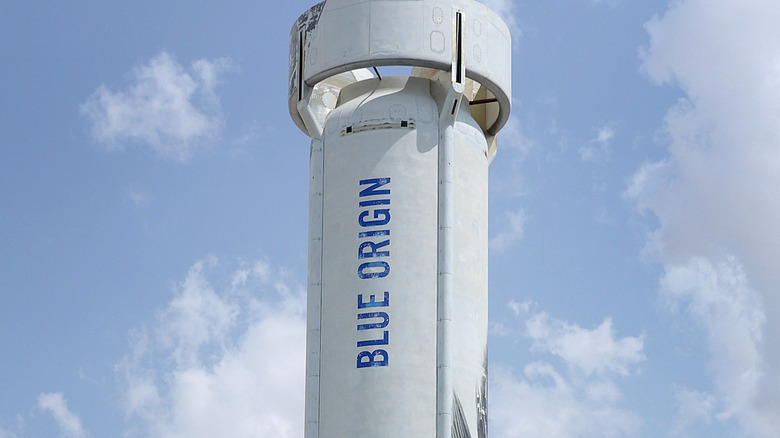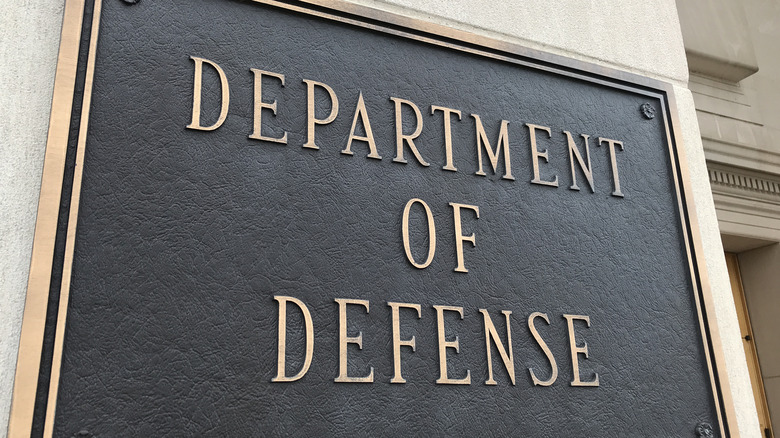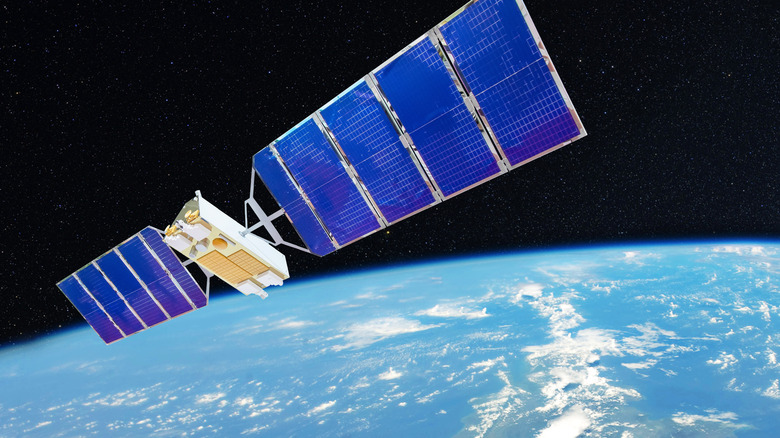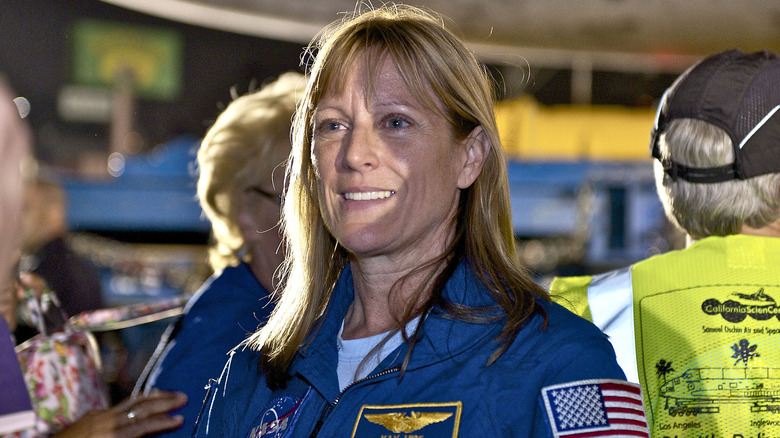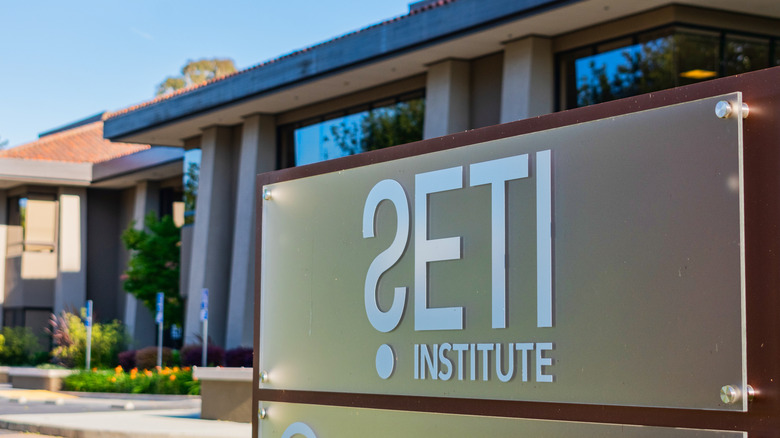Things People Get Wrong About Working At NASA
In 2019 — coinciding with the golden anniversary of the first space mission to put a man on the moon — The Harris Poll conducted an online survey for LEGO. Out of 3,000 children aged 8 to 12 from the United States, the U.K., and China, 86% expressed an interest in space exploration, and 11% said that they wanted to become astronauts someday. It would be reasonable to think that the kids who saw spacefaring as a viable career might want to apply for a job at a space agency when they grow up. And when it comes to space agencies, the National Aeronautics and Space Administration (NASA) is arguably the first place that comes to mind, especially if you're American.
The Partnership for Public Service and the Boston Consulting Group placed NASA at the top of its list of the best federal government agencies to work for in 2022. They based their assessment on how federal employees answered three questions: whether they'd recommend their place of employment as "a good place to work," their level of job satisfaction, and their level of satisfaction with the organization itself. This definitely paints a picture of the administration as an ideal workplace for anyone interested in pursuing a career related to space science. However, there are a number of misconceptions about working at NASA that must be addressed before anyone decides to submit their application there, including (but not limited to) career progression at the agency, its minimum qualifications, and even its primary objectives.
False: You have to be a genius to work there
Given the nature and inherent complexity of space science, it's easy to assume that being part of NASA requires doing some considerable cerebral heavy lifting. After all, there's a reason why the saying "It's not rocket science" exists: The general perception tends to be that only the brainiest of brainiacs are allowed to work in both the agency and the industry.
However, as former NASA flight director Paul Hill revealed in an interview with Business Insider, you don't exactly need to be a super-genius from a prestigious university to have a career at the agency. According to Hill, some people think that all NASA employees are "4.0s from MIT" who can do complicated mental math without breaking a sweat — but he was quick to debunk that notion. "We're a normal cross section of normal engineers that actually have this incredible work that we do," shared Hill. "Normal engineers from schools from across the country — and, in some cases, from around the world — who just got the opportunity to do these phenomenal jobs and then took them seriously and did them well."
As summed up by Laurie Cantillo, a science communicator who works at the Special Projects & Web Modernization division of the agency's Jet Propulsion Laboratory: "Don't assume that you need to be a genius in math or science to work at NASA. We need all hands on deck and a variety of skills to succeed" (via NASA).
False: NASA's research is useful only in space
You may have come across this line somewhere on social media (likely in the comments section of an article about NASA), or perhaps you've even heard some version of it in real life: "Why would we spend so much time, effort, and money studying space, when we already have so many problems to solve here on Earth?" The underlying assumption in this statement is that research conducted by NASA and similar agencies does nothing to make life convenient for the general public, which couldn't be further from the truth.
Take enriched baby formula, for instance. The discovery of a natural source of an omega-3 fatty acid critical for infant organ development (which is infused into over 90% of commercially available baby formula) was the result of NASA-funded research for Mars missions. The memory foam that is now widely used in beds, shoes, chairs, and couches was developed by similarly funded scientists for the purpose of ensuring NASA test pilots' safety and comfort.
Invisible braces, which have served as a source of relief for teenagers and adults alike, were first crafted using translucent ceramic produced in a NASA collaboration. Even the development of high-precision GPS, which we rely on for various industries and functions nowadays, moved forward due in no small part to NASA 's need for accurate satellite positioning and monitoring. Lastly, the miniaturized cameras in numerous communication and medical devices were invented with the intent of using them for NASA's space missions.
False: A big chunk of the national budget goes to NASA
Some people argue against NASA's continued funding, saying that the U.S. government spends way too much money on the agency. Indeed, space research comes at a cost, and if your immediate assumption is that it can be quite expensive, you wouldn't exactly be wrong. What may surprise you, though, is that it's actually not as expensive as some think it is.
In 2022, NASA received about $24 billion in funding, or approximately 0.5% — yep, less than a percent — of the U.S. government's overall annual spending. While that number increased to $25.4 billion in 2023, NASA's funding is still a relatively small dent in the national budget, a fact that has remained true over the last five decades. NASA's federal funding is allocated to six major program areas, none of which include intelligence-gathering or national defense: human spaceflight, aeronautics, scientific research, education, facilities and overhead, and technology development.
This, in turn, creates more employment opportunities in these programs' related fields, thereby making the agency a vital and impactful component of the U.S. economy. During the 2021 fiscal year alone, NASA reportedly sustained nearly 340,000 jobs nationwide with above-average compensation; over 93,000 of those jobs were attributed to a single campaign ("Moon-to-Mars"). The agency's investments were also linked to nearly $8 billion worth of federal, state, and local tax revenues.
False: Working at NASA means focusing on colonizing space
NASA declares its vision to be to "exploring the secrets of the universe for the benefit of all," which is an admittedly vague statement. Meanwhile, its mission statement outlines space exploration, innovation for mankind's benefit, and making inspiring discoveries as its primary goals. Contrary to what some people believe, the agency doesn't exist solely to colonize neighboring planets and moons. However, it did come into existence because the U.S. didn't want to be left behind in the space race.
On October 1, 1958 – nearly a year after Russia successfully launched its satellite Sputnik 1 — NASA was officially established by virtue of the National Aeronautics and Space Act. Section 102 of the act outlined the eight core objectives of the agency, one of which involves developing and operating "vehicles capable of carrying instruments, equipment, supplies, and living organisms through space." In relation to this goal, NASA is tasked with increasing "human knowledge of phenomena in the atmosphere and space" and designing safe, fast, and efficient space vehicles.
Aside from space exploration, NASA seeks to extensively pursue research about the potential benefits, opportunities, and challenges of space-related activities; help keep the U.S. at the forefront of space science worldwide; share crucial discoveries and information of "military value or significance" with national defense agencies; cooperate with other countries when necessary; and ensure that U.S. agencies working toward shared goals are on the same page to avoid spending time and resources redundantly or superfluously.
False: NASA stands in the way of private space companies that will render it obsolete
With the emergence of private space companies, some may believe that NASA is both obsolete and redundant at this point, and that the agency may even hinder the progress of these businesses. On the contrary, NASA and private space companies actually co-exist harmoniously, for two reasons: what they can offer each other, and the agency's own limitations in terms of commercial viability.
According to The Verge, NASA has historically been against the commercialization of its products and services, due to its ties to the government. As one can imagine, this severely restricts how the agency is able to fund its operations. However, the agency recently announced a series of collaborative projects with seven U.S.-based space companies – Blue Origin, Northrop Grumman, Sierra Space, SpaceX, Special Aerospace Services, ThinkOrbital, and Vast Space — under the Collaborations for Commercial Space Capabilities-2 initiative (CCSC-2), a potential boon to the so-called "low Earth orbit economy." The scope of these collaborations will include space transportation, commercial science research and manufacturing, and in-space infrastructure.
False: Working at NASA means working for the Department of Defense
It's important to remember that NASA is a civilian agency, and not part of the Department of Defense (DOD). The scope of NASA's research efforts does occasionally overlap with the interests of agencies and contractors involved with matters of national defense, but the agency's primary directive is still grounded in peaceful space research, exploration, and technology development. With that said, a brief look at NASA's history can easily explain why some people mistakenly believe otherwise.
Prior to the establishment of NASA, there was the National Advisory Committee for Aeronautics (NACA), a federal agency specializing in aeronautics research and development that served both military and civilian purposes. Things changed in 1958, when President Dwight D. Eisenhower advocated specifically for a civilian space agency to take the lead in the country's space science initiatives. Despite his extensive military background, Eisenhower strongly supported the idea of a civilian agency taking charge of space science (as opposed to leaving it in the hands of an agency like NACA) to bypass "inter-service rivalries" and accelerate the process of the U.S. successfully launching its own satellite.
Still, while NASA operates independently from the DOD, the two government bodies do work together. In 2020, NASA Administrator Jim Bridenstine and Space Force Gen. John W. "Jay" Raymond jointly announced a memorandum of understanding between NASA and the DOD, setting the stage for a long-term collaboration on matters of space policy, planetary defense, space research, and human spaceflight.
False: NASA is the only major player in space research
The international space research scene has changed drastically over the last five decades. While we could say that the United States technically remains ahead of other countries' space agencies — by virtue of it being the only country to successfully send humans to the moon – it is far from being the only dominant player among all the countries with space programs.
To date, there are over 70 space agencies across the planet. Aside from NASA, Russia's Roscosmos and the China National Space Administration (CNSA) are the only other space agencies known to have the capacity to conduct human spaceflight missions. Other agencies, such as the European Space Agency, Italy's Agenzia Spaziale Italiana (ASI), the Indian Space Research Organization (ISRO), and the Japan Aerospace Exploration Agency (JAXA), are equipped with the capacity to conduct space launches and send probes to other planets and moons.
But does it really matter if the U.S. still remains the worldwide leader in space research and exploration? If the results of a 2018 study by the Pew Research Center are to be believed, nearly three-fourths of the American population say so. Interestingly, though, the study participants expressed that NASA should prioritize climate monitoring (63%), planetary defense (62%), basic space research (47%), and technology development (41%) over sending astronauts to the moon or Mars.
False: You have to be a pilot or have military experience to be an astronaut
NASA's Astronaut Selection Board reviews thousands of applications per year; candidates who pass the screening must then successfully get through two interviews to make it to the final selection pool. One would think that to be an astronaut, you'd need to have a proper aviation-focused degree, or at the very least, extensive flying experience. Interestingly, NASA doesn't require aspiring astronauts to have actual flying experience before they apply to the Astronaut Candidate Program, though it does still come with some important requirements.
For starters, Astronaut Candidate Program applicants must be U.S. citizens with a master's degree in particular fields under the science, technology, engineering, and mathematics (STEM) umbrella, but not all science- and tech-related degrees will qualify. Alternatively, the applicant may qualify if they have completed at least two years of work toward a STEM-related doctorate program, or are enrolled in (or have completed) a nationally recognized test pilot school program. Additionally, while flying experience isn't a must, applicants need to have either two years of relevant professional experience or 1,000 hours of pilot-in-command time in jet aircraft (typically achieved via military service). That's not all, though. Assuming you qualify for the candidate program, there's also a long-duration astronaut physical that requires 20/20 visual acuity (or at least, visual acuity that can be corrected to 20/20 with glasses). Lastly, there are specific body measurement requirements for astronaut candidates, related to both the spacesuit and the spacecraft.
False: NASA only hires scientists and astronauts
Sure, NASA doesn't need you to be a super-genius just to deem you worthy of being hired. But what if you're not a scientist or an aspiring astronaut? Fortunately, there's still a potential place for you among the many job opportunities at the agency, regardless of whether or not you graduated with a STEM-related degree. All you have to do is check all the open positions at NASA via the USAJOBS portal.
As NASA notes on its FAQ page: "NASA isn't just astronauts and scientists. NASA has engineers, mathematicians, accountants, writers, IT specialists, project managers, public relations managers, and more." What's more, you don't even need a college degree to be eligible to work at NASA. Provided that you have the necessary experience (which, as NASA states, is generally the case for the majority of federal positions), there are numerous non-professional, non-scientific, and non-engineering jobs that you can apply for at the agency. On the other hand, if you're looking for internships, fellowship opportunities, or short-term arrangements, NASA has its own website specifically for those listings.
False: The SETI Institute is part of NASA
Incorporated in 1984 and based in California, the SETI Institute is a nonprofit organization dedicated to the search for extraterrestrial intelligence (SETI). While it may seem logical to conclude that the SETI Institute is part of NASA — a notion that is perhaps supported by the Institute's close proximity to the NASA Ames Research Center — it isn't a NASA program, and it functions independently from the agency. According to the SETI Institute's website, it mainly relies on individual and corporate donations to continue its operations.
While NASA did allocate funding toward its own SETI project called the High-Resolution Microwave Survey (HRMS), that came to a grinding halt in 1993, when Nevada senator Richard Bryan pushed for the termination of the project's funding due to budgetary concerns. With that said, the agency's search for microbial life through its other projects certainly hasn't stopped, as evidenced by the exploration and data collection directives of the Mars rovers on the Red Planet.
The two institutions have been working together for more than a decade, though, and have strengthened their shared commitment in finding extraterrestrial life through contract projects and partnerships. In 2020, the civilian space agency awarded the SETI Institute what it described in a press release as "a contract to support all phases of current and future planetary protection missions to ensure compliance with planetary protection standards."
False: You need a doctorate to become a flight director
While perhaps not as familiar or iconic to the general public as astronauts, the flight director job entails some pretty significant duties, despite having both feet firmly planted on Earth soil. Flight directors are the chief decision-makers at the mission control center, making difficult decisions and taking charge of the flight controller, research, engineering, and support teams for astronauts. With such an important role, it would make sense if aspiring flight directors were required to have a doctorate in order to qualify for the position.
As it turns out, however, this isn't the case. Much like how aspiring astronauts don't need to be pilots to be eligible for the Candidate Program, fight director candidates don't need to have Ph.D.s just to be considered for the position. Additionally, they don't even need to have been a flight controller at NASA to be considered. They do, however, need to possess at least a Bachelor's degree in biological science, computer science, engineering, mathematics, or physical science from an accredited educational institution. On top of that, they must possess relevant, on-the-job experience when it comes to working in "high-stress, high-risk environments" that require them to make decisions within the shortest possible time.
